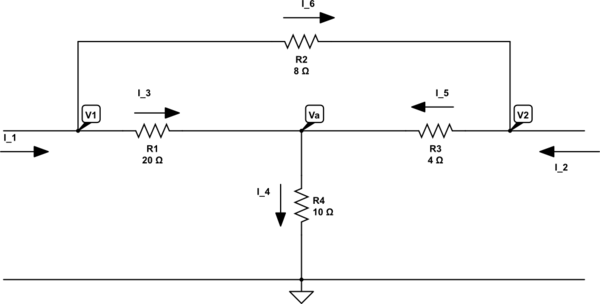
simulate this circuit – Schematic created using CircuitLab
Question: Find the y parameters for the circuit shown below.
My attempt:
KCL
\$I_1 = I_3 + I_6 \$
\$I_4 = I_3 + I_5\$
\$I_5 = I_2 + I_6\$
EFC:
\$I_3 = \frac{V_1 - V_a}{20}\$
\$I_4 = \frac{V_a-0}{10}\$
\$I_5 = \frac{V_2 - V_a}{4}\$
\$I_6 = \frac{V_1 - V_2}{8}\$
Solving this systems for \$ V_1 \$ and \$ V_2\$ yields:
\$ V_1 = \frac{35}{2} + \frac{25}{2} \$
\$ V_2 = \frac{25 }{2} + \frac{27}{2} \$
Therefore our Z parameters are as follows:
\begin{bmatrix} \frac{35}{2} & \frac{25}{2} \\ \frac{25}{2} & \frac{27}{2} \end{bmatrix}
I know how to find the y parameters using delta Z, but I thought there was a way to solve for these items directly in the system of equations. Can I solve for the y parameters directly?

